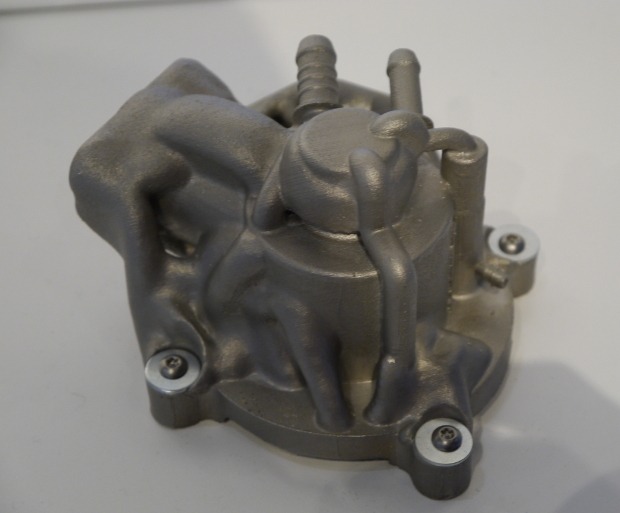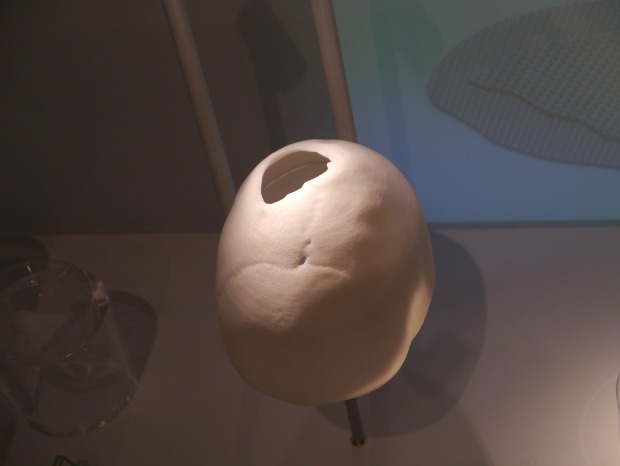Energy & Commodities
 India Will Dominate the Silver Market in 2013. With silver falling by 26% so far this calendar year, even factoring in the recent surge, you’d be excused for presuming there were negative fundamentals developing in the market for the white metal. Indeed the fundamentals have been changing, but they all favour the price of silver. Unfortunately for investors, this has not yet been reflected in the price. The most recent import data from the Indian government confirms reports that Indians are importing significant quantities of silver. The latest data, provided to us by Nikos Kavalis from Metals Focus Ltd., shows that India imported US$1.78 billion worth of silver during Q2 – a 311% increase over the same period last year. This equates to 3,015 tonnes of silver in the first half of 2013, putting Indians on track to import more than 6,030 tonnes of silver this year. If this trend continues through the rest of 2013, we would see the highest silver imports in the past five years.
India Will Dominate the Silver Market in 2013. With silver falling by 26% so far this calendar year, even factoring in the recent surge, you’d be excused for presuming there were negative fundamentals developing in the market for the white metal. Indeed the fundamentals have been changing, but they all favour the price of silver. Unfortunately for investors, this has not yet been reflected in the price. The most recent import data from the Indian government confirms reports that Indians are importing significant quantities of silver. The latest data, provided to us by Nikos Kavalis from Metals Focus Ltd., shows that India imported US$1.78 billion worth of silver during Q2 – a 311% increase over the same period last year. This equates to 3,015 tonnes of silver in the first half of 2013, putting Indians on track to import more than 6,030 tonnes of silver this year. If this trend continues through the rest of 2013, we would see the highest silver imports in the past five years.
As we examined the Indian import data in more detail we saw that silver is coming to India from all corners of the earth to satiate demand. The most notable sources have been the UK, Switzerland and China. Many countries that had not previously shipped the metal to India are also making their first shipments this year. The Indians have become an enormous new buyer of silver, sopping up bullion supply from around the world. Putting these numbers into perspective, according to the Silver Institute, the world produced 24,478 tonnes of silver in 2012, meaning the Indians are currently on track to import 25% of the world’s mined silver supply. And, believe it or not, this number could increase given the forecasts for monsoon season.
via Mark Leibovit’s VRGoldLetter

Initial Jobless Claims spiked 66k this week, up to 374k, the 2nd highest level of the year. The high number is being blamed on the government shutdown issues along with the 15,000 government workers that filed claims.
The S&P Futures are now up 20pts on the day to 1669 with gold futures trading down $10 to $1296.
Drew Zimmerman
Investment & Commodities/Futures Advisor
604-664-2842 – Direct
604 664 2900 – Main
604 664 2666 – Fax
800 810 7022 – Toll Free

 This stainless steel car engine part to the right was created using a laser-sintering 3D printer.
This stainless steel car engine part to the right was created using a laser-sintering 3D printer.
While laser sintering printers are currently one of the priciest variety of 3D fabricators available, they also reduce waste as any unused metal powder can be reused.
Professor Dietmar Hutmacher from the University of Queensland in Australia used 3D printing to help repair a hole in a nine year old girl’s skull.
 The professor took a 3D scan of the girl’s skull and used it to design a 3D scaffold that could be placed in the missing piece of her skull.
The professor took a 3D scan of the girl’s skull and used it to design a 3D scaffold that could be placed in the missing piece of her skull.
Inside the scaffold was a precise network of channels that could hold bone cells and allow new tissue to grow. The scaffold was printed using biodegradable materials, which
meant after three years it dissolved, leaving new healthy bone that filled in the hole in her skull.
A new exhibition has opened in London to show off the multitude of uses that are being found for 3D printers. View 10 more astonishing images & descriptions of what 3D printers have done HERE
The impact of 3D printing on manufacturing will be as profound as the Industrial Revolution by the estimation of some tech industry pundits.
Today there are certainly a growing number of industries building 3D models, with fields as diverse as aerospace and biotechnology finding a use for 3D printing.
Lower cost 3D printers are beginning to find their way into homes too, with 3D printers priced at around £1,000 available in office and computer stores, as well as shopping hubs like Amazon.
There’s also a burgeoning community of hobbyists building their own 3D printers based on open source designs, such as RepRap, and sharing designs for a wealth of objects through the online portalThingiverse.
Even more exotic uses of 3D printers are being researched, including machines that build bone using stem cells and that create objects out of wood filaments, cement polymer and salt.
“3D printing is really reaching out and touching everything. It’s comparable to the web in that it’s a technology that can be applied to whatever you want it for,” said Dave Marks, media and content director for 3D Printshow, which provided the printers for the show.
The breadth of what 3D printers can build was on show at the Science Museum in London, which yesterday opened an exhibit of more than 600 3D printed objects ranging from satellite sensors to prosthetic arms.
3D printing has several advantages over traditional manufacturing techniques. Building a model doesn’t require spending thousands or more to set up machine tools and then thousands more when you want to change that model. It makes it financially viable to build one-off models and to tweak and customise 3D models in a way that would rapidly become hugely expensive using traditional manufacturing methods. Making simple repairs to old household appliances, rather than replacing them, also becomes more viable when spare parts can be printed off in your living room, rather than having to be tracked down and ordered online. Using a 3D printer also cuts down the supply chain: the network of factories, warehouses and shipping companies normally needed to get a product to an end user.
3D printing can also build objects using novel materials with complex shapes and structures that would be extremely difficult to reproduce using traditional methods. General Electric recently revealed a 3D-printed ceramic and carbon fiber jet engine whose lightweight design should allow for fuel economy unmatched by conventionally made counterparts. Waste can be reduced as the printer is generally using only the materials needed to build the object, rather than carving material out of a larger structure to create an object.
But in general 3D printers are also slow, two-inch high figurines printed out at the Science Museum exhibition took about one hour to print, are far more expensive than traditional manufacturing techniques for mass production and consumer grade 3D printers are only able to produce relatively simple plastic models.
How 3D printers work
3D printers work by taking a 3D computer model and slicing it into layers. The 3D printer then builds the object layer by layer using one of a number of methods.
Most home and hobbyist printers print using Fused Deposition Modeling (FDM), which basically builds a model out of molten plastic. FDM machines feed plastic thread into a printer head, where the plastic is melted and squeezed out of a nozzle called an extruder. The head traces the outline of each layer, gradually building the model using melted plastic.
The quality of the finished model depends on many factors, including the quality of the base material, how thinly sliced the model is, the mechanics of the 3D printer and the care taken in preparing the 3D computer model.
Yet the quality of 3D models produced by FDM generally don’t match those built by some other more costly 3D printing technologies used by industry. One such technology is laser sintering.
Laser sintering uses a laser to fuse powder together into the model. The process works by tracing the outline of each each layer onto powdered material using a laser to fuse the object together layer by layer. Laser sintering is able to reproduce fine details and build models out of a wider range of materials than FDM, such as ceramics, metals and glass.
While the FDM printers available to novice home users today generally produce relatively simple models in a single colour and material, more advanced machines are becoming available.
The quality of 3D printers available to home users is expected to take a leap forward from next year after patents run out on key technologies related to laser sintering, which in the long run may make sintering machines affordable for the home user.
View 10 more astonishing images & descriptions of what 3D printers have done HERE


 David Kotok, Chairman and Chief Investment Officer of Cumberland Advisors (and our host at “Camp Kotok” for the annual “Shadow Fed” fishing expedition), leads off today’sOutside the Box by meticulously dissecting the roadkill that is our federal government’s process for deciding whether they will continue to pay their bills and federal employees’ wages.
David Kotok, Chairman and Chief Investment Officer of Cumberland Advisors (and our host at “Camp Kotok” for the annual “Shadow Fed” fishing expedition), leads off today’sOutside the Box by meticulously dissecting the roadkill that is our federal government’s process for deciding whether they will continue to pay their bills and federal employees’ wages.
Will the US default? David doesn’t think so, and neither do I; but oh, the foolishness, even to tempt the economic fates (read: the markets) this way. David notes that global investors think differently about US default risk than we US-centric types do. Well, David Zervos is with me here at Barefoot, and we just heard that one foreign prime broker (and now maybe two?) is calling hedge funds to say they will not take short-term T-bills as collateral and will mark T-bills down to zero in the event of an actual default. The ultimate risk-free asset is now full of risk? REALLY? This is an unthinkable event. This broker is a Primary Dealer, and I assume they will very shortly get some irate phone calls; but these things start with one bank and then it turns into a herd.
David Zervos, Managing Director at Jefferies, gives us his own slant on the ups and downs and ins and outs of default in today’s second OTB selection. He fills us in on some key constitutional history regarding default and makes it clear what is legal, what is illegal, and what is downright perverted about the process playing out in Foggy Bottom. David remains confident that the Fed is the “one adult in the room that can (and will) put a stop to the madness if we go down the highly unlikely path to default.” We’ll see.
As we confront that possibility, let’s note that Social Security is a trust fund, so the money is set aside in bonds. Not to make Social Security payments would be an administrative decision, not one due to a lack of funds. Other entitlements, you can argue. It will be interesting to see what gets priority if it comes to that, as money comes into the Treasury every day, so there is plenty to cover the interest on the debt, and rollovers could be done under the limit.
However it shakes out, we can only hope that the parties who made the decision to close down the public memorials as a way to demonstrate the “costs” of the government shutdown will not be allowed to come anywhere near the decisions on prioritizing payments. Those idiots should be fired and barred from ever having any level of public responsibility. It cost far more to put up barricades and man them than it would have cost simply to leave the memorials open. To tell WW2 veterans that they cannot see their own public memorial when they have come, perhaps for the last time, to acknowledge the lives of those with whom they served, is beyond appalling. The Tomb of the Unknown Soldier? The Lincoln Memorial? These are public places that could and should have been left open. To barricade them was a petty, punitive act with the most venal of political motives.
It is one thing to disagree on budgets and process and the constitutional order of things. I know that many of my readers are very passionate about which side the bulk of the blame belongs to. But I come down on both sides with almost equal frustration. I understand the American political process and know some of the history of how business gets done in Washington, but some things are just beyond the pale. I would say to our “leaders,” cultivate some perspective and get a grip.
And since we’re getting all the nitty-gritty on federal sausage-making today, I just had to toss in a note from the incomparable, indomitable Joan McCullough, who dredges up for us an esoteric but not irrelevant gem called the Feed and Forage Act of 1861. I will let Joan explain, as only she can.
I get to spend the next three days at the Barefoot Ranch, partaking of an intensive economic/investment festival (calling it a conference simply misses the energy in the room). All hosted Texas-style by Kyle Bass. His connectivity is astounding: the people gathered represent some of the finest thinking anywhere – and he has managed to get them in one room. Some of the names are old friends to this letter (Lacy Hunt, Niall Ferguson, Anatole Kaletski, Jon Sundt, Mark Yusko, Larry Lindsey, and David Zervos), and others are names that ride under the radar, yet run some of the best trading funds in the world. I can’t tell you how excited I am to be allowed in the room. I will report back this weekend on what I learn.
And now I’m off to try to figure out where the world is going, eat a lot of BBQ and chuckwagon food, and just have some fun. Life can be so good at times.
Your forever amazed at the US political process analyst,
John Mauldin, Editor
Outside the Box
Ed Note: Read the articles in a nice clear .pdf link HERE, or continue to John’s Outside the Box Main Page



 Gold took quite a beating in September, bucking its seasonal average monthly return of 2.3 percent. The political battle between President Barack Obama and Congress, China’s Golden Week, and India’s gold import restrictions likely weighed on the metal.
Gold took quite a beating in September, bucking its seasonal average monthly return of 2.3 percent. The political battle between President Barack Obama and Congress, China’s Golden Week, and India’s gold import restrictions likely weighed on the metal.









